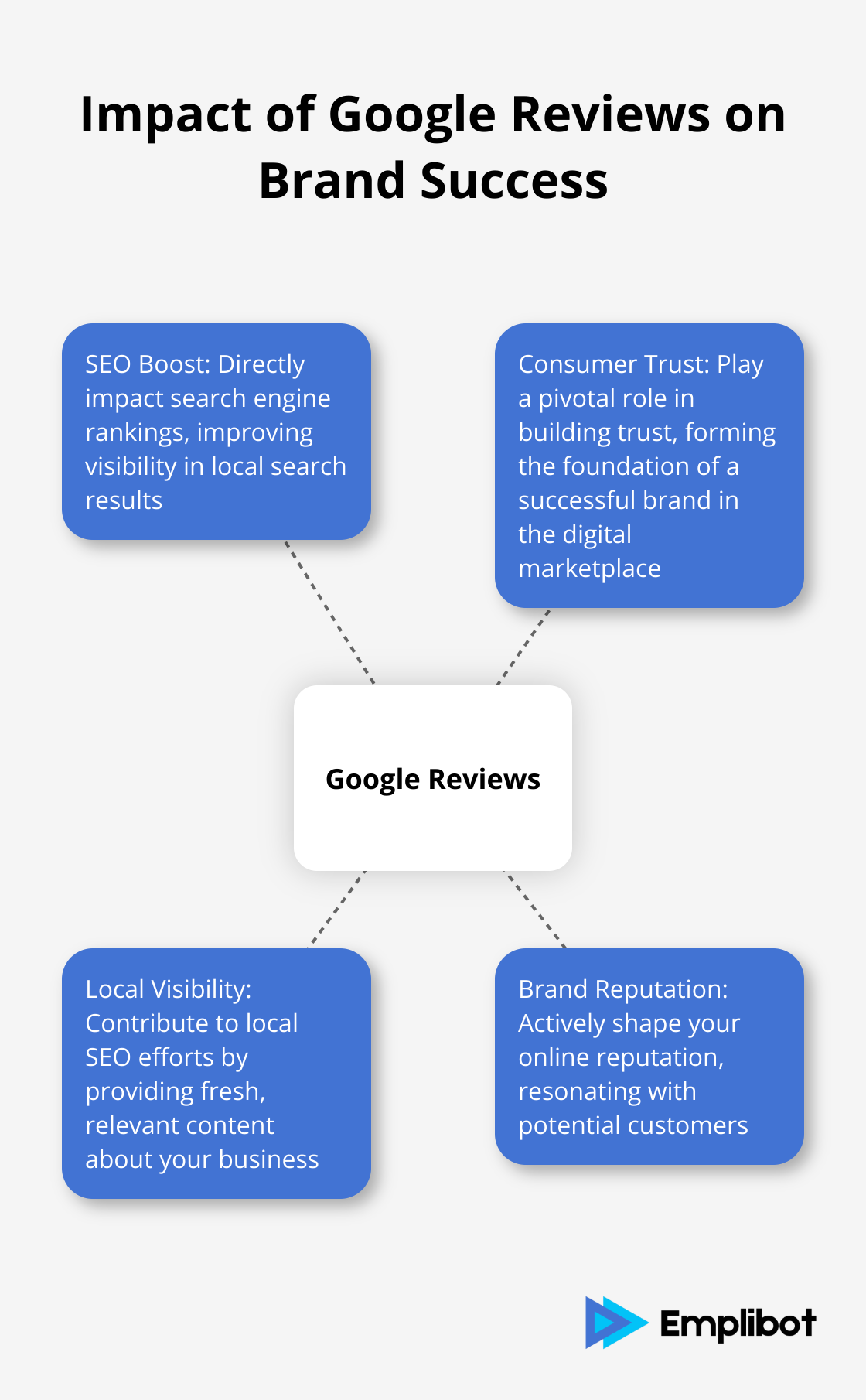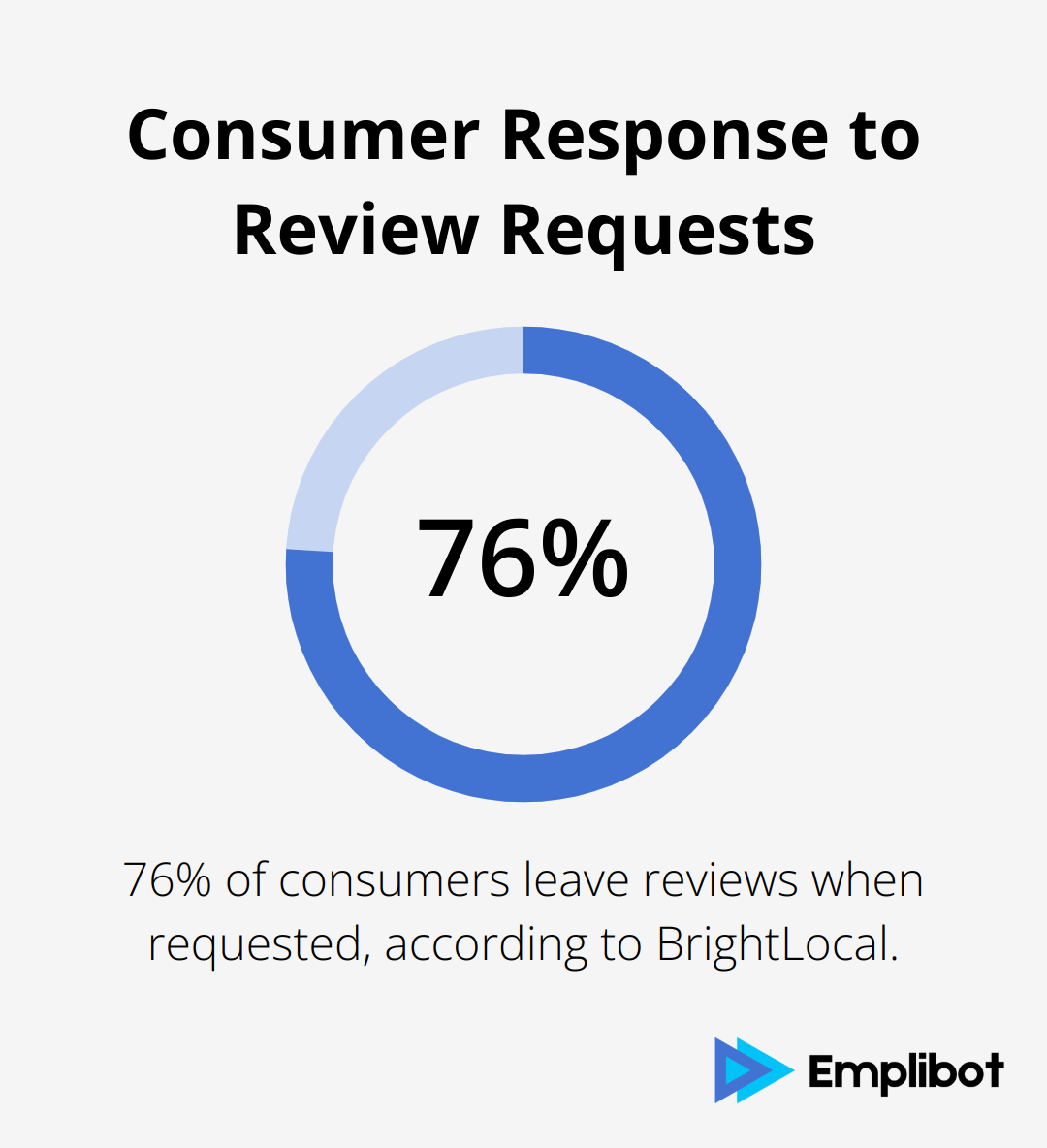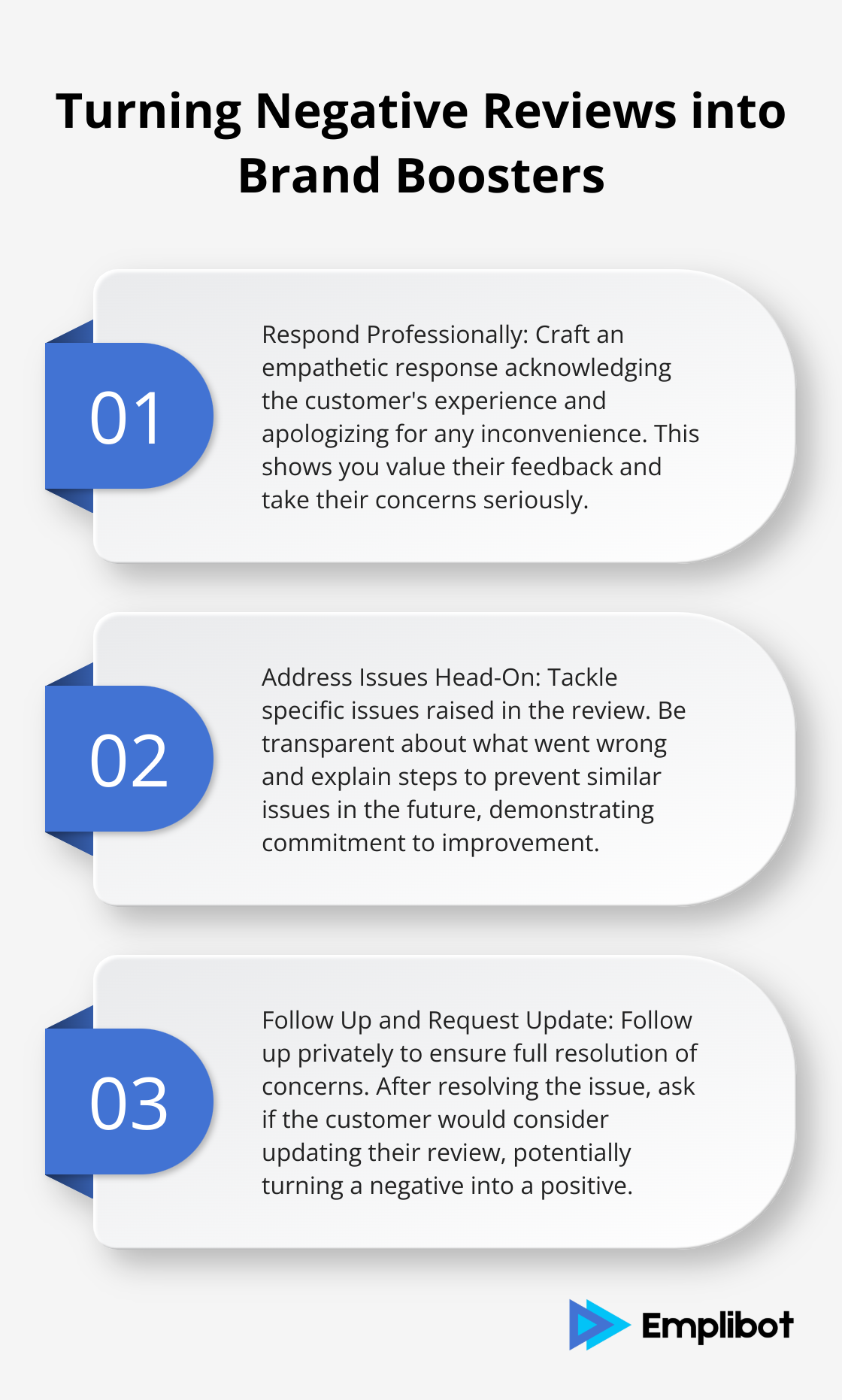Google reviews can make or break your brand’s reputation. At Emplibot, we’ve seen firsthand how managing Google reviews effectively can transform a business’s online presence.
In this post, we’ll explore strategies to manage Google reviews and build a stronger brand. We’ll cover techniques to encourage positive feedback, handle negative comments, and leverage reviews for better search rankings and customer trust.
Contents
ToggleWhy Google Reviews Matter for Your Brand
Google reviews wield significant influence in shaping your brand’s online presence. Businesses with robust review profiles often outperform their competitors in various aspects of digital marketing.
The SEO Boost from Google Reviews
Google reviews directly impact your search engine rankings. Local SEO ranking factors, such as Google Business Profile, online reviews, and local citations, are used by Google and other search engines to determine the relevance of businesses in local search results. Active management of your Google reviews can significantly improve your visibility in local search results.

Building Consumer Trust Through Reviews
Trust forms the foundation of any successful brand, and Google reviews play a pivotal role in its construction. The importance of maintaining a positive review profile cannot be overstated in today’s digital marketplace.
Local SEO and Visibility Enhancement
For businesses targeting local customers, Google reviews prove particularly vital. They contribute to local SEO efforts by providing fresh, relevant content about your business.
Strategies for Leveraging Google Reviews
To harness the power of Google reviews effectively, consider these strategies:
- Implement a systematic approach to encourage satisfied customers to leave reviews.
- Respond promptly to all reviews (both positive and negative) to show that you value customer feedback.
- Use review management tools to streamline this process and ensure no review goes unnoticed.
The Impact on Brand Reputation
Managing your Google reviews isn’t just about damage control-it’s about actively shaping your brand’s online reputation. A focus on generating and responding to reviews not only improves your search rankings but also builds a trustworthy brand that resonates with potential customers.
As we move forward, let’s explore specific strategies for managing Google reviews to maximize their impact on your brand’s success.
How to Effectively Manage Google Reviews
Proactively Seek Customer Feedback
Don’t wait for reviews to come to you. Take action to encourage satisfied customers to share their experiences. BrightLocal reports that 76% of consumers who receive a request to leave reviews comply.

Here’s how you can increase your review count:
- Train your staff to request reviews at the point of sale or service completion.
- Send follow-up emails to customers with a direct link to your Google review page.
- Create and display QR codes (leading directly to your review page) prominently in your business.
Try to maintain a steady stream of new reviews rather than sporadic bursts. This approach keeps your review profile fresh and relevant.
Respond Swiftly to All Reviews
Quick responses to reviews demonstrate that you value customer feedback and prioritize customer satisfaction. 53% of customers expect businesses to respond to negative reviews within a week. However, don’t neglect positive reviews-responding to these can transform satisfied customers into brand advocates.
When you respond to reviews:
- Address the reviewer by name for a personal touch.
- Express gratitude for their feedback, regardless of its nature.
- For negative reviews, apologize for the poor experience and offer a solution.
- Maintain professionalism and courtesy, even when faced with harsh criticism.
Leverage Review Management Tools
Managing reviews across multiple platforms can consume significant time. Review management tools can help you:
- Monitor reviews across various platforms from a single dashboard.
- Set up alerts for new reviews, ensuring prompt responses.
- Analyze review sentiment and track your overall rating over time.
- Generate reports to identify trends and areas for improvement.
While numerous review management tools exist, choose one that integrates seamlessly with your existing systems and offers robust analytics capabilities.
Turn Negative Reviews into Opportunities
Negative reviews, while initially discouraging, can serve as powerful opportunities to showcase your commitment to customer satisfaction. A Harvard Business Review study found that businesses responding to negative reviews subsequently see an increase in ratings.
When you address negative reviews:
- Take the conversation offline if possible (provide contact information for further discussion).
- Investigate the issue internally before responding.
- If appropriate, explain the steps you’re taking to prevent similar issues in the future.
- After resolving the issue, politely ask if the customer would consider updating their review.
The implementation of these strategies will not only improve your Google review profile but also strengthen your brand’s trustworthiness. The next section will explore how to transform these reviews into valuable assets for your brand’s growth and reputation.
How to Turn Negative Reviews into Brand Boosters
The Power of Professional Responses
Negative reviews don’t spell doom for your brand. They offer opportunities to improve your reputation when you handle them well. A Harvard Business Review study revealed that businesses who respond to customer reviews (positive and negative) see an increase in their ratings.
When you face a negative review, resist the urge to defend your business. Instead, craft a professional and empathetic response. Start by acknowledging the customer’s experience and apologize for any inconvenience. This approach shows that you value their feedback and take their concerns seriously.
Example response: “We apologize for your experience, [Customer Name]. We always strive to provide excellent service, and we clearly missed the mark in your case.”
Address Issues Head-On
After you acknowledge the customer’s concerns, tackle the specific issues they raised in their review. Be transparent about what went wrong and explain the steps you’ll take to prevent similar issues in future. This approach demonstrates your commitment to continuous improvement.

For instance, if a customer complains about slow service, you might respond: “We’ve identified the cause of the delay you experienced. We will implement new training procedures to ensure faster service for all our customers.”
Follow-Up Strategy
Don’t let the conversation end after you address the issue. Follow up with the customer privately to ensure you’ve fully resolved their concerns. This personal touch can significantly help rebuild trust.
After you resolve the issue, ask the customer if they would consider updating their review. A BrightLocal study found that 33% of customers who received a response to their negative review posted a positive review, while 34% deleted their original negative review.
Turn Detractors into Advocates
Every negative review presents an opportunity to showcase your commitment to customer satisfaction. Handle these situations with grace and professionalism to transform detractors into advocates. This approach can strengthen your brand’s reputation in the process.
Leverage Review Management Tools
Managing reviews across multiple platforms can consume significant time. Review management tools (like Emplibot) can help you monitor reviews across various platforms from a single dashboard, set up alerts for new reviews, analyze review sentiment, and generate reports to identify trends and areas for improvement.
Final Thoughts
Google reviews shape brand reputation in the digital age. They impact search rankings, consumer trust, and local visibility. Businesses must actively manage Google reviews to thrive in today’s competitive landscape. This approach creates a feedback loop that enhances products, services, and customer experience.
Effective Google review management yields substantial rewards. It improves search rankings, increases customer trust, and enhances brand reputation. Every review provides an opportunity to showcase commitment to customer satisfaction and refine business practices.
We at Emplibot offer a comprehensive solution for content marketing automation. Our platform streamlines online presence and content strategy across various platforms. The principles of active engagement and reputation management (discussed in this post) apply to all aspects of your online presence.










